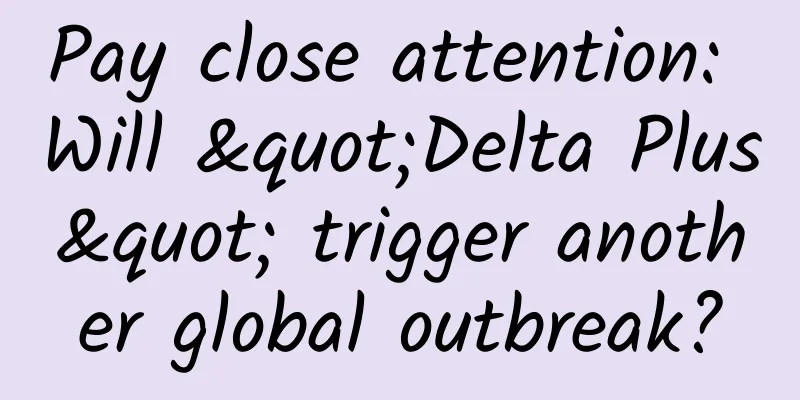How to motivate users to continuously produce high-quality content

|
Zhihu original question: In addition to the more common user behavior incentives such as points, levels, and identity tags, are there any other emerging and unique strategies? Competition charts, levels, titles, identity tags, points, achievement medals, rankings, etc. are actually quite common, but I think there are always some very clever incentives. By the way, everyone knows the importance of content. The problem is what measures can better encourage users to generate more user behaviors, let users participate in the production of content, and how to more effectively establish the initial user atmosphere. So, what I want to know are more unique and effective incentives. @Sima Bonsai's answer 54 votes Personally think: What Internet users expect most is that their work is recognized, such as the blogs/posts they publish, the videos they shoot, etc., so "being recommended" is the biggest incentive for users. "Being recommended" can be the user's account or the user's work. Secondly, a sense of achievement or popularity. Once a user's views are repeatedly recognized by many people, then this user enjoys a certain degree of popularity in a certain circle. Virtual forms such as experience and medals can be an identity of this type of user, but not complete. Third, being noticed. The "attention" here does not refer to the attention of other netizens, but the attention of editors, operators, etc. An ordinary netizen would like to be noticed by the administrator of a forum or the editor of a blog, so that they will feel different from others. ***, are some very small material rewards. In fact, these material rewards are very simple. On special days, give them some commemorative small gifts, so that they can show off in front of others that "XX.com editor sent me XX.com commemorative notebook". Personally, I believe that if we want users to continuously provide high-quality content, we must not relax the maintenance of every high-quality content provider and capture their hearts. @Terry Meng's answer 46 votes There are several goals: Promote more user behavior Involve users in content creation Create a user atmosphere In short, establish a good mechanism to enable customers to be active and spread the word spontaneously. This sentence actually answers 3 of the previous 5 questions, assuming your business model has no other related concerns. I would recommend doing some simple analysis of your existing customer base: What are my major customer segments? What are the corresponding user behaviors (focus on analyzing the differences in their spontaneously generated content) And analysis of the influence of these types of customers on other customers We can take Zhihu as an example. After 6 months of operation, it has accumulated a certain number of customers, who can be roughly divided into: Big V Active customers (logged in, viewed questions, liked them, but answered few questions) Passersby (occasionally log in, occasionally read questions, occasionally like, and basically do not answer questions) Assuming their proportions are 5% - 60% - 35% respectively, and using the basic 20/80 principle, big V (5%) + most active active customers (15%) contribute 80% of the community content and influence. You can see that different customer groups have different reactions and expectations to incentives. For example, for the "passerby" group, no matter what user points earning strategy you use, they probably won't react much. The incentives for big Vs and active customers will be different. Active customers are especially important, and they are basically what Zhihu needs to pay the most attention to. Different incentives can be used according to different user behaviors. So your goal is to prioritize based on the data you have: Let these 20% of customers continue to contribute to the current content Encourage the other 60% of active customers to contribute more content and be more active Encourage ordinary passers-by to become active customers If we analyze what these 20% want the most, we can know from the content they usually pay attention to that copyright issues seem to be their biggest concern, such as how to prevent other platforms from reprinting, etc. Then your incentive is to ensure that their content is respected and protected by copyright, and that they get corresponding credit. The e-magazine published by Zhihu is a start, which solves the problem of respecting copyright and giving credit very well. After that, we can develop cooperation with different media to make the answers of these 20% appear in front of more people. The same goes for "Zhihu Salt". So what do the other 60% of customers want? Currently, Zhihu's main way of motivating this group of people is through "likes", "thanks" and Zhihu Daily. Some of these customers will continue to work hard to contribute content. Whether the purpose is to stand out or to respect the content, the best way to motivate them is to promote their answers. A hypothetical scenario is that every time Zhihu Daily or Weibo recommendation is published, a certain number of such users are selected and their best answers are pushed. (These are just some examples. The key is to emphasize that the corresponding mechanism should be set according to the actual situation, that is, the expectations of different user groups.) The remaining "passerby" customers are also divided into different types of readers. For example, some people are interested but just don't have time to read and answer. Some readers only come a few times but don't find the topic they like, etc. In fact, Zhihu Daily solves this problem very well. Then the incentive lies in when these users find the topic they like and start to interact (log in to Zhihu Daily and reply). What kind of incentive is used to make them start to use Zhihu more is the goal of the incentive. I haven't thought about this yet. Let me answer this first, in short: Incentives are not a one-time mechanism. Of course, you can use extensive methods to solve the problem in the early stages of entrepreneurship. However, you must take "different customer groups, different incentive mechanisms, and creating corresponding value" as the core of your thinking. @Scientists Planting the Sun 51 votes There are no new ideas about how users should be motivated, but there are some new ideas about how users "should not" be motivated. Marx said that internal factors determine external factors. From a psychological point of view, people’s internal motivation is also a powerful force to maintain behavior patterns, but external motivation may sometimes weaken this effect. The most classic example is the story of the old Jewish man: Every day, there were children playing in front of the old Jewish man's door, which was very noisy. The old man thought of a way to drive them away. On the first day, he gave each child a dollar to thank them for playing in front of his house and making him very lively and happy. The children were also very happy. On the second day, he gave all the children 50 cents, saying that he didn't have that much money to give, but he still hoped to see them playing in front of his door every day. The children were a little dissatisfied. On the third day, he said that he had no money to give to the children, but he still hoped that the children would continue to play here. The children felt very angry and left. Playing is originally the internal motivation of children, and it can continue without external stimulation and reinforcement. However, the Jewish old man weakened the role of internal motivation through external motivation (giving money), and the continuation of behavior depended on external motivation. Then he withdrew the external motivation, and the child's play behavior disappeared~ The same is true for users. Users can be roughly divided into several levels: fanatics, recommenders, light users, followers, and indifferent. Obviously, they should be treated differently. For those users with strong internal motivation, it is enough not to impose too much external motivation to destroy their internal motivation; for users who are not very interested, some more vivid and substantial stimulation may be adopted; for the wavering users in the middle, the more economical and long-term way is to cultivate their internal motivation as much as possible and turn them into fanatics, rather than snob users who are only interested in some substantial rewards, otherwise they will easily lose. |
<<: A brief analysis of automatic login to the Web App in WeChat
>>: Ideas on introducing Lanchester equation into SLG games
Recommend
Apple confirms iPhone/iPad will become bricked if the time setting is incorrect
On February 16, it was reported a few days ago th...
Zhongguancun Entrepreneurship Street: From "Coffee Shop" to "Industry Faction"
Beijing's "Zhongguancun Startup Street&q...
It can "breathe fire"! Be careful when buying it
Can you buy a hair dryer for 15 yuan? Is it safe?...
Jike App - Competitive Product Analysis Report
One sentence introduction: My version: A minimali...
Do you feel sleepy when it rains? Huaxi doctors say it may be because your brain is "hypnotized" by you
The rain in Chengdu is really capricious It's...
Casual talk: Some thoughts on Android system permissions
The permission management of the Android system h...
How to write World Cup copy? Here are some ready-made…
The World Cup is coming, how can copywriters scor...
China Brain Health Day | Is there smoke in your brain? Is it all caused by smoking? Learn more about this little-known cerebrovascular disease!
The brain is the core of regulation of all physio...
Nanjing Tea Tasting Studio is arranged throughout the city, Xiao Huang always arranges it well
Nanjing tea drinking studio arrangement, high-end...
A complete list of advertising cases and strategies for Moments!
There are two types of advertisements for WeChat ...
The essence of brand operation, using F4 to crack Steve Jobs' reality distortion
Today we are going to talk to you about how brand...
A movie theater was demolished, but the "big secret" of the Shang Dynasty city was revealed
1. Origin That year, I heard that the Dongfanghon...
The hot 2022 Chengdu new tea arrangement is worth collecting
Reservation arrangements for Chengdu new tea: 135...
Would you like to be "dumped" to Mars?
In the past two years, the whole society has beco...
Lei Jun, Zhou Hongyi and other business leaders' success secrets courses
From ideals to successful entrepreneurship, Lei J...









